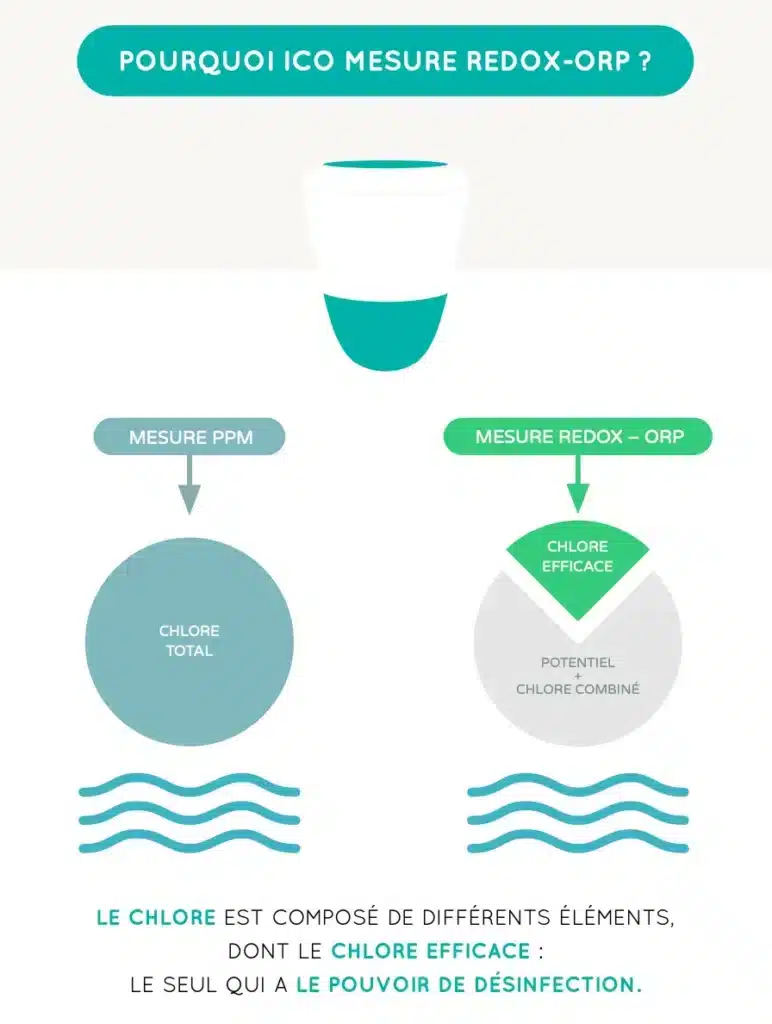Every hour, ICO measures the pH, ORP or Redox, TDS or salt, and temperature of your pond to provide recommendations for keeping your water healthy and clear. Here are some explanations to better understand each of these four parameters and how they are used by ICO's intelligence.
Le pH mesure de l’acidité ou la basicité de l’eau de votre piscine sur une échelle de 1 à 14.A 7, le pH est neutre. En dessous, il est acide, au-dessus, il est basique.
Measuring the pH is essential to check that the water is properly balanced. Well-balanced water requires fewer maintenance products and preserves coatings and equipment.
The pH of the bathing water should ideally be between 7.2 and 7.6, in order to preserve the health and comfort of the swimmers, the equipment and to optimize the disinfection.
Small differences may apply depending on the type of pool and the disinfection method chosen.
More information on pH variations
ORP (Oxidation Reduction Potential), also known as Redox, determines the disinfecting power of water by measuring the effective chlorine level.
ORP is measured in millivolts (mV). ICO will adjust the minimum and maximum thresholds according to the configuration of your pool (type, equipment, etc.). You can adjust them at any time in the application. (see here)
For optimal disinfection of water at 25°C, international standards recommend ORP / Redox measurements between 650 and 750mV.
Unlike the measurement of total or free chlorine, the ORP does not take into account chloramines. These are the chlorine "waste products" that are responsible for bad odors. As for potential chlorine, it will only be effective under certain conditions.

More information on ORP-redox variations.
TDS stands for Total Dissolved Solids. This measurement is given either in mg/l or in ppm (parts per million). It indicates the amount of invisible solids present in the water. This includes minerals (calcium and sodium from chemicals) as well as particles brought in by bathers.
Too high a TDS can damage equipment (marks on the lining) and affect bather comfort (eyes, irritated skin). Finally, TDS affects the effectiveness of disinfectant products. When it is too high, it can reduce the effectiveness of treatment products.
La mesure TDS permet donc de connaître la concentration de sel présent dans l’eau. Elle permet à ICO de fournir des recommandations adaptées et personnalisées pour l’ajout du sel pour le confort de l’eau.
More information on TDS variations
More than just comfort, temperature measurement has a strong impact on water quality.
The warmer the water (up to a certain point of course) the easier it is for bacteria to grow. This is why the filtration time and the consumption of products are closely linked to the water temperature.
In your ICO application, default temperature thresholds are applied:
Pour les piscines : 25 à 28°C – Pour les spa : 35 à 40°C
The recommended temperature ranges take into account bathing comfort and the conditions required for balanced water.